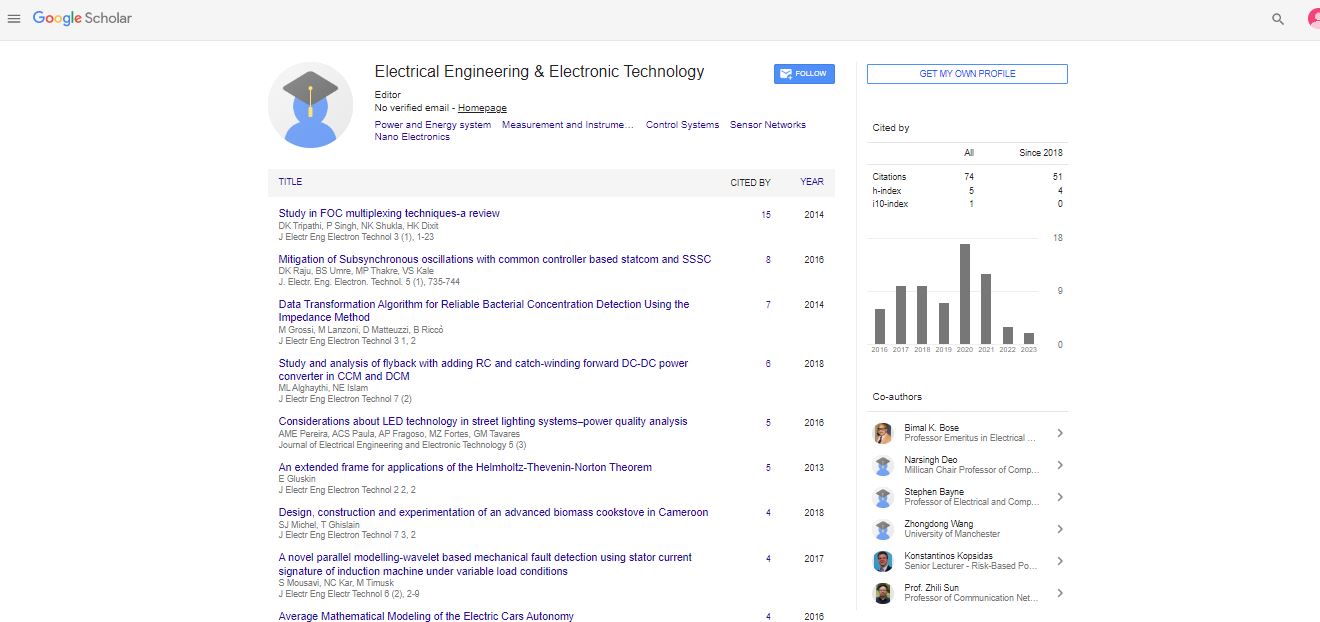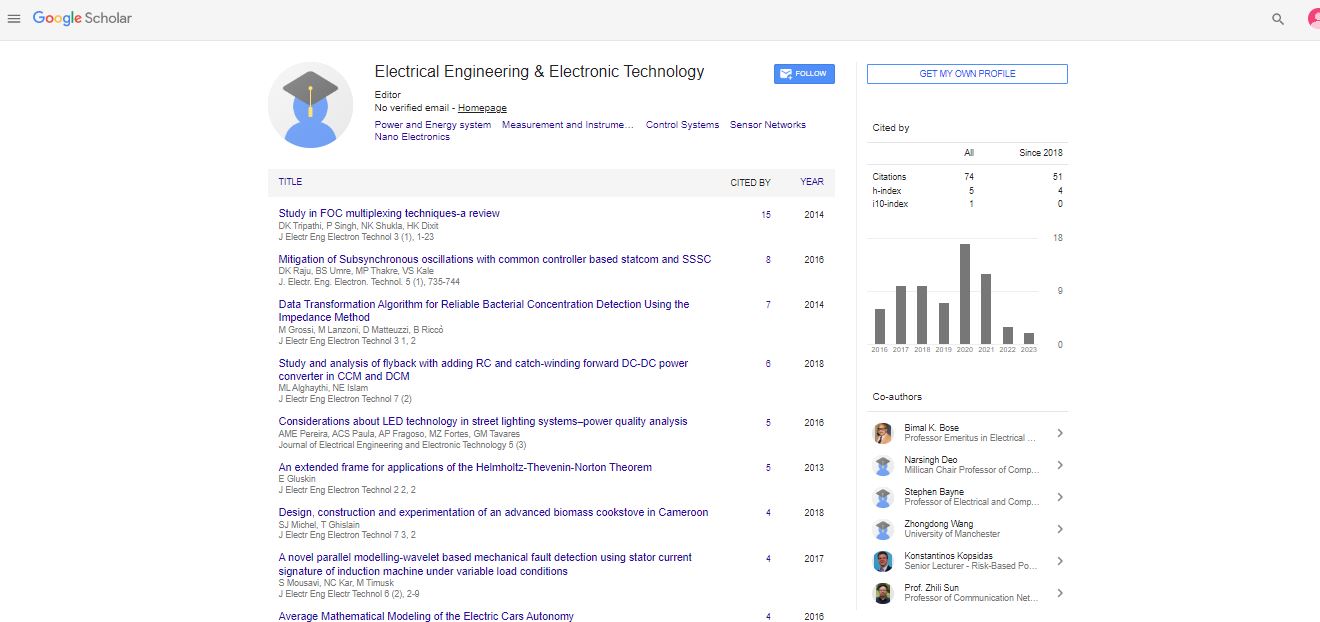Research Article, J Electr Eng Electron Technol Vol: 7 Issue: 2
UHF Band-Pass Filter Based on Parallel Coupled Resonators
Mounir Belattar1*, Mohamed Lashab2 and Abdelaziz Benhabrou1
1Department of Electrical Engineering and Computer Engineering, University 20 Août 1955 University, Skikda, Algeria
2Department of Electrical Engineering and Computer Engineering, University Larbi Ben M’hidi, Oum EL Bouaghi, Algeria
*Corresponding Author : Mounir Belattar
Department of Electrical Engineering and Computer Engineering, University 20 Août 1955 University, Skikda, Algeria
Tel: 778626469
E-mail: mounir.belattar@yahoo.com
Received: June 04, 2018 Accepted: July 07, 2018 Published: July 14, 2018
Citation: Belattar M, Lashab M, Benhabrou A (2018) UHF Band-Pass Filter Based on Parallel Coupled Resonators. J Electr Eng Electron Technol 7:2. doi: 10.4172/2325-9833.1000163
Abstract
The proposed microstrip filter is based on parallel coupled lines whose propagation mode is quasi-TEM, this type of filter take an important part in various communication systems. In this work we will study the procedure of design and realization of an UHF band-pass filter with centre frequency of 868.5 MHz and bandwidth of 1 MHz based on Coupled parallel lines, the obtained theoretical results are in good agreement with the literature.
 Spanish
Spanish  Chinese
Chinese  Russian
Russian  German
German  French
French  Japanese
Japanese  Portuguese
Portuguese  Hindi
Hindi 
